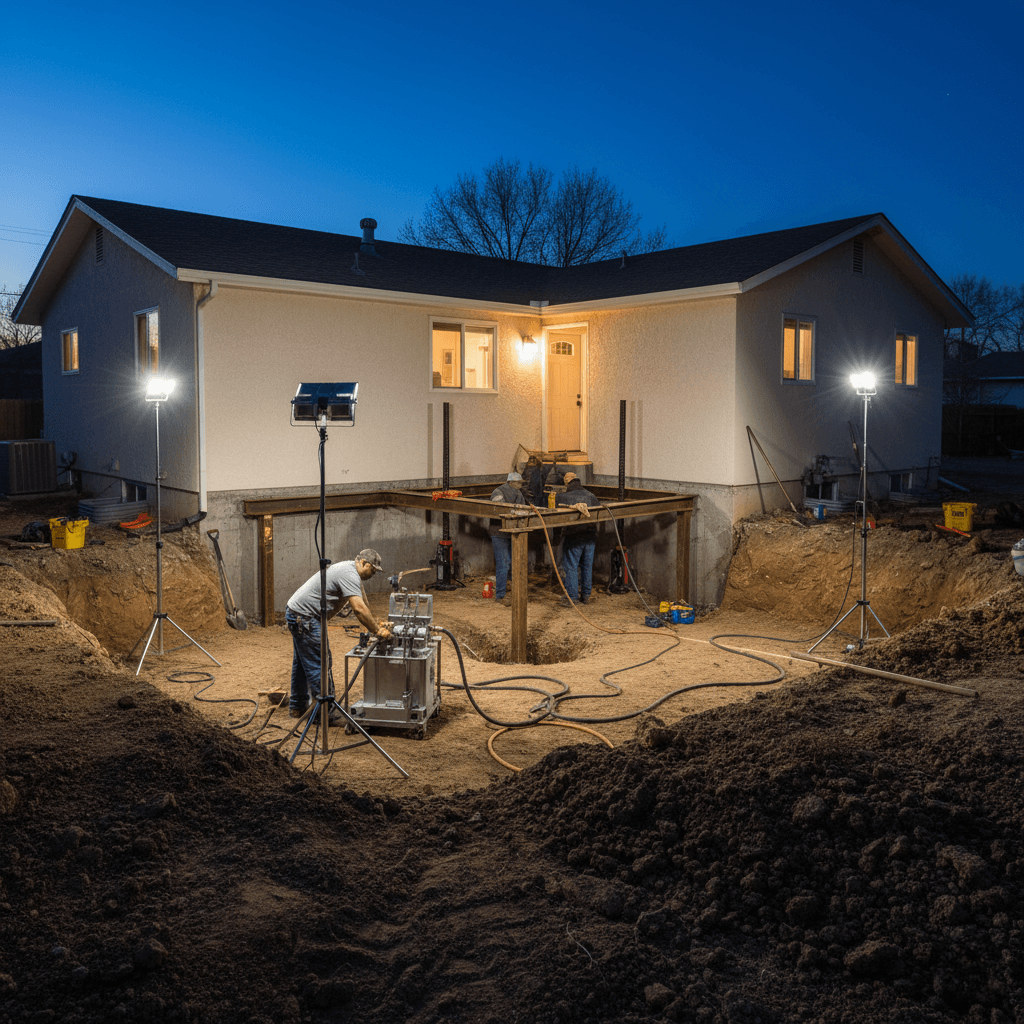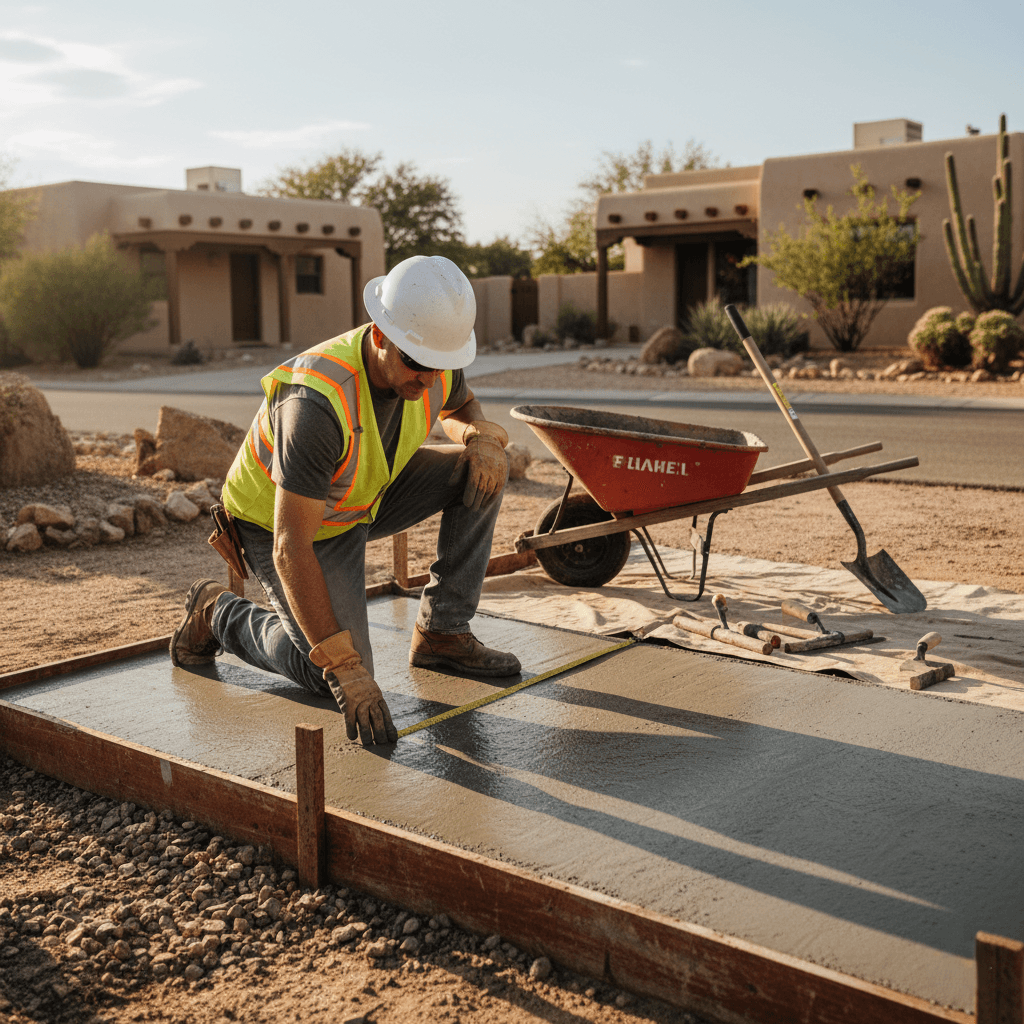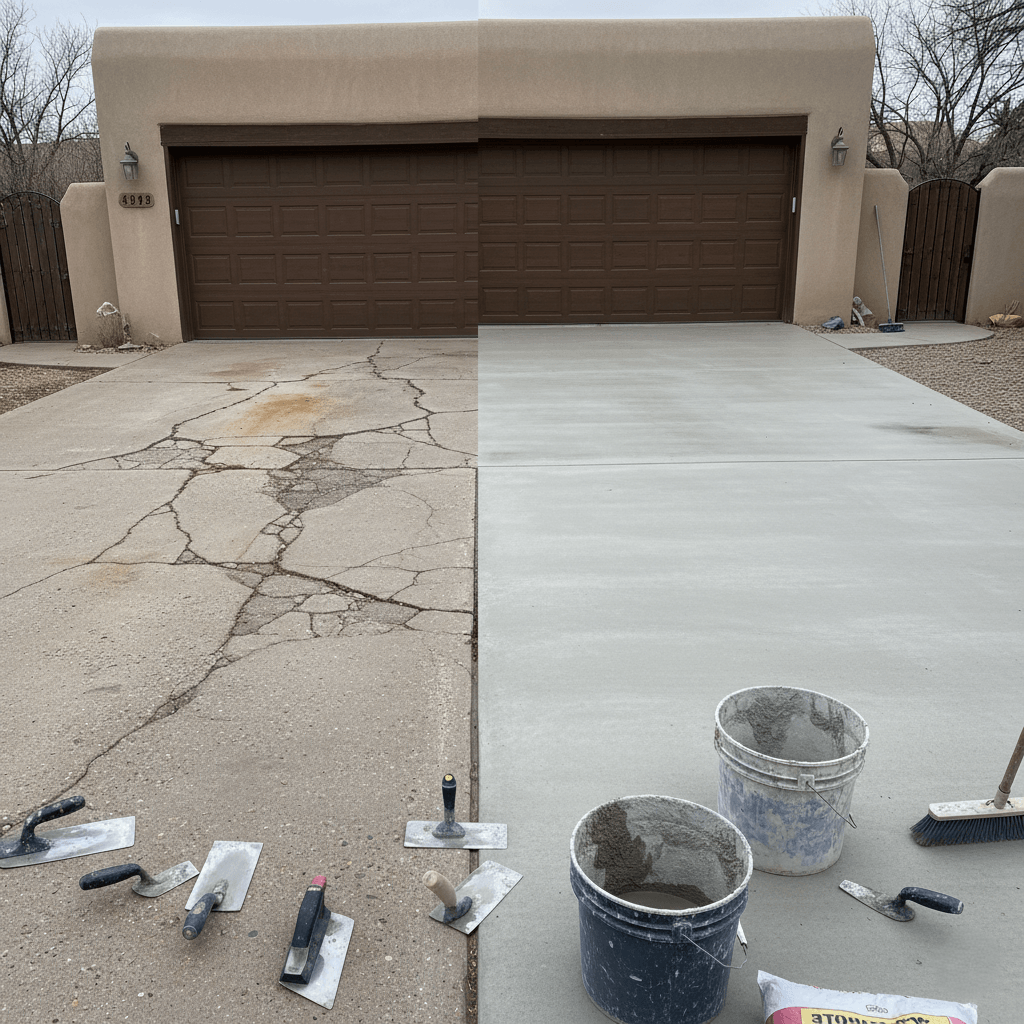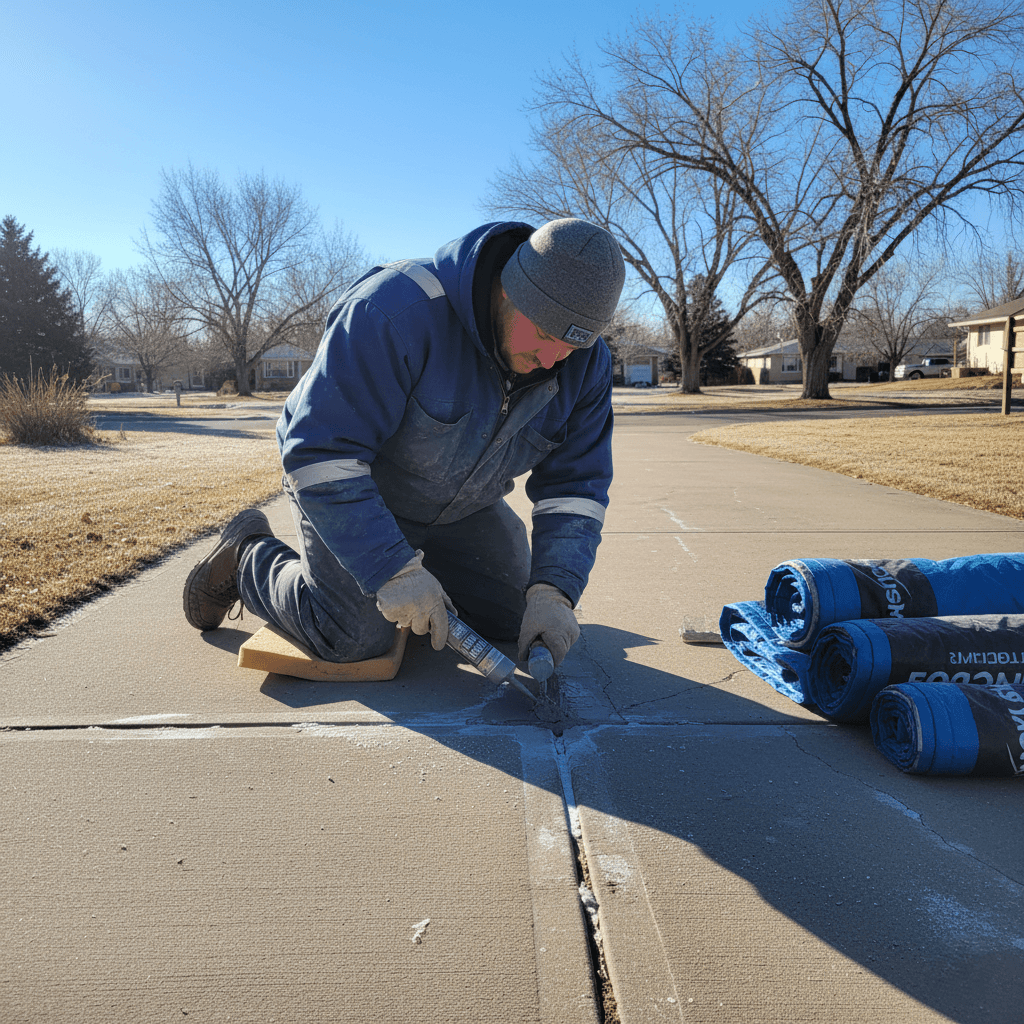
Is a Stamped Concrete Patio Worth It in Pueblo’s Climate?
Stamped Concrete Patio Pueblo
Homeowners in Pueblo face unique challenges when selecting outdoor materials that withstand our distinctive climate patterns. A stamped concrete patio offers the aesthetic appeal of natural stone or brick at a fraction of the cost, but performance in freeze-thaw conditions raises important questions. Understanding how decorative concrete performs in southeastern Colorado’s weather helps you make informed decisions about your outdoor investment. Our region experiences temperature swings, intense sun exposure, and moisture variations that affect material longevity. Evaluating these factors ensures your patio choice delivers both beauty and durability for years to come.
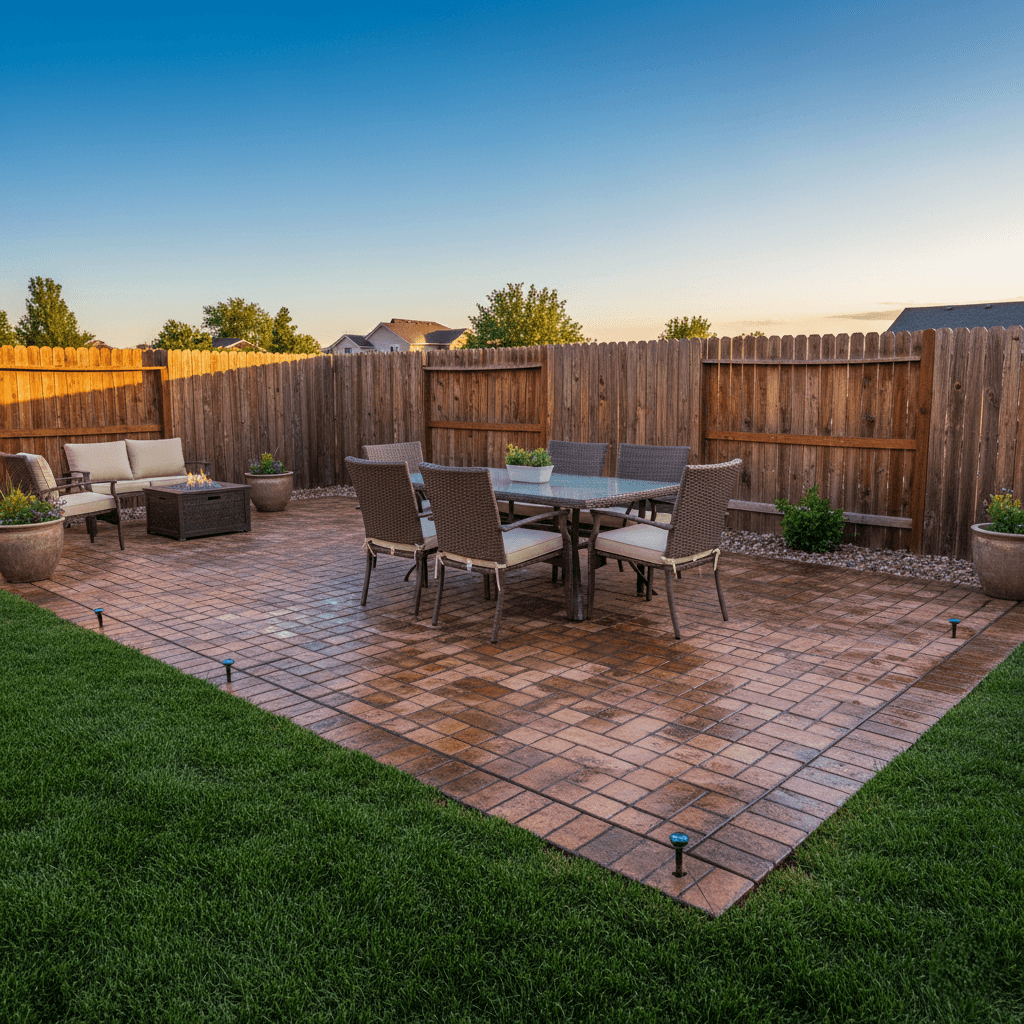
Understanding Pueblo’s Climate Challenges
Pueblo’s semi-arid climate presents distinct challenges for outdoor concrete installations. Our region experiences approximately 100 freeze-thaw cycles annually, creating expansion and contraction stress within concrete surfaces. Winter temperatures frequently drop below freezing at night, then rise above freezing during the day. This daily cycling proves more damaging than consistently cold temperatures found in other climates.
Summer brings intense sun exposure with temperatures regularly exceeding 90 degrees Fahrenheit. The UV radiation fades colors over time and can degrade surface sealers prematurely. Additionally, Pueblo receives about 12 inches of annual precipitation, though moisture arrives in concentrated periods. Properties throughout neighborhoods like Aberdeen and Belmont experience these conditions equally. Clay-rich soil, common in our area, retains moisture, potentially increasing freeze-thaw damage to concrete surfaces.
How Stamped Concrete Patio Installations Perform
Durability in Freeze-Thaw Conditions
Properly installed stamped concrete withstands Pueblo’s freeze-thaw cycles when specific precautions are taken. The key lies in air-entrainment, which introduces microscopic air bubbles throughout the concrete mix. These tiny voids provide space for frozen water to expand without creating internal pressure. Without air-entrainment, water trapped in concrete pores freezes, expands, and causes cracking or surface spalling.
We always specify air-entrained concrete mixes for stamped patio projects in Pueblo. The concrete should contain 4 to 7 percent entrained air by volume to resist freeze-thaw damage effectively. Additionally, proper base preparation prevents water accumulation beneath the slab. Properties in areas like Mesa Junction or Northside with varying drainage conditions require careful site assessment. High-quality installation techniques prove more critical than the decorative finish itself when ensuring long-term performance.
Surface Integrity Over Time
The stamped surface itself adds minimal vulnerability compared to plain concrete when properly sealed. Stamping creates texture and pattern without significantly weakening the concrete structure. However, the decorative surface treatments require ongoing maintenance to preserve their appearance. Color hardeners applied during stamping actually strengthen the surface layer, making it more resistant to abrasion and wear.
Surface sealing protects the stamped pattern from moisture infiltration and UV damage. Quality sealers create a barrier preventing water from entering the concrete while allowing water vapor to escape. This breathability proves essential in Pueblo’s climate, where moisture can become trapped within concrete. Regular resealing maintains this protection and keeps colors vibrant despite our intense sun exposure.
Maintenance Requirements in Pueblo
Stamped concrete patios demand more maintenance than plain concrete but considerably less than natural stone or pavers. The primary maintenance involves resealing every two to three years, depending on sun exposure and traffic patterns. Properties with southern exposure, common throughout Pueblo, experience faster sealer degradation from UV radiation. The resealing process costs approximately $1 to $3 per square foot.
Routine cleaning prevents dirt accumulation in the textured patterns. Power washing effectively removes buildup but requires moderate pressure settings to avoid damaging the sealer. Avoid using deicing salts during winter months, as these chemicals accelerate surface deterioration. Instead, use sand for traction on icy surfaces. Properties in University Park or Eagleridge neighborhoods benefit from establishing regular maintenance schedules. Consistent upkeep preserves appearance and extends the patio’s functional life significantly.
Cost Analysis for Pueblo Homeowners
Initial Investment Comparison
Stamped concrete patios in Pueblo typically cost between $12 and $25 per square foot installed. This pricing includes the stamped pattern, integrated color, and initial sealing. Comparatively, plain concrete costs $5 to $12 per square foot, while natural stone runs $20 to $40 per square foot. Brick pavers fall in the $15 to $30 range, depending on quality and pattern complexity.
For a typical 300-square-foot patio, stamped concrete costs $3,600 to $7,500 installed. The same area in natural stone would cost $6,000 to $12,000 or more. These substantial savings make decorative concrete attractive to budget-conscious homeowners. However, the initial cost represents only part of the total investment. Considering long-term maintenance expenses provides a complete financial picture.
Long-Term Value Consideration
Properly maintained stamped concrete patios last 20 to 30 years in Pueblo’s climate. Annual maintenance costs average $200 to $400 for cleaning and periodic sealing. Over a 25-year lifespan, total maintenance expenses add approximately $5,000 to $10,000 to the initial investment. Natural stone requires less frequent maintenance but demands higher repair costs when individual stones crack or shift.
Pavers need periodic releveling and joint sand replacement, costing several hundred dollars every few years. When calculating lifetime costs, stamped concrete often proves more economical than alternatives. Additionally, the enhanced curb appeal adds property value. Real estate professionals note that attractive outdoor spaces influence buyer decisions significantly. Properties throughout Country Club and Heritage neighborhoods demonstrate this value increase.
Aesthetic Considerations
Stamped concrete offers virtually unlimited design possibilities, matching any architectural style. Popular patterns in Pueblo include flagstone, slate, brick, and cobblestone textures. Color options range from earth tones complementing our regional aesthetic to custom hues matching specific preferences. Multiple colors can be combined to create realistic stone appearances that enhance outdoor living spaces dramatically.
The seamless surface eliminates the gaps between pavers where weeds emerge and debris accumulates. This continuous appearance suits modern design preferences while maintaining traditional pattern options. However, some homeowners find that stamped concrete never quite replicates the authentic look of natural materials. The texture and pattern prove convincing from a distance but lack the subtle variations of genuine stone. Properties in Belmont or Sunset neighborhoods showcase various stamped designs demonstrating this range of possibilities.
Installation Quality Matters
Proper Technique Requirements
The success of a stamped concrete patio depends heavily on installation quality. Proper base preparation, concrete mix design, and finishing techniques determine long-term performance. The base must be compacted thoroughly to prevent settling that causes cracks. Adequate drainage prevents water accumulation beneath the slab, which proves especially important in Pueblo’s clay soils.
Timing during the stamping process requires precision and experience. Contractors must stamp the concrete at the exact right moment when it holds the pattern but hasn’t hardened completely. Temperature affects this timing window significantly. Hot summer days in Pueblo accelerate concrete setting, demanding efficient work. We schedule stamped projects during moderate weather whenever possible to ensure optimal conditions.
Common Installation Mistakes
Several installation errors compromise stamped concrete performance in our climate. Insufficient air-entrainment leaves the concrete vulnerable to freeze-thaw damage. Poor drainage planning creates moisture problems that manifest as cracking or spalling. Inadequate base preparation causes settling and structural cracks that ruin the appearance.
Color application mistakes result in uneven or blotchy finishes that never look quite right. Improper sealing allows moisture penetration, accelerating deterioration. Rushing the installation process increases the likelihood of these problems. Properties throughout Pueblo have examples of both excellent and poor stamped concrete installations. The difference in longevity and appearance justifies investing in experienced contractors who understand local conditions.
Weather-Specific Performance Factors
Summer Sun and Heat
Pueblo’s intense summer sun tests the durability of stamped concrete sealers and colors. UV radiation breaks down surface sealers gradually, reducing their protective effectiveness. Color fading occurs more rapidly on patios with direct southern exposure throughout the day. Lighter colors typically show less fading than darker shades, though quality pigments resist UV damage better.
Heat absorption becomes a consideration for barefoot comfort during the summer months. Stamped concrete surfaces can become quite hot under direct sunlight, though lighter colors remain cooler than dark surfaces. Adding shade structures or planning patio locations with partial shade improves usability during peak summer heat. Properties near City Park or along the Riverwalk often incorporate these cooling strategies successfully.
Winter Ice and Snow
Winter conditions present the greatest challenge for stamped concrete in Pueblo. Freezing temperatures combined with moisture create the damaging freeze-thaw cycles. Proper sealing proves critical during the winter months when protection matters most. Snow accumulation itself causes no damage, but the melting and refreezing cycles that follow can be problematic.
Snowplow damage represents another winter concern for stamped driveways and large patios. The metal blade can chip or gouge the decorative surface, requiring repairs that rarely match the original appearance perfectly. For this reason, stamped concrete works better for patios than driveways in our climate. Properties in Skyview or West Park neighborhoods demonstrate various winter management approaches that preserve stamped surfaces.
Comparing Alternative Materials
Natural stone offers unmatched authenticity but costs significantly more than stamped concrete. Stone also requires professional installation and periodic maintenance to address settling or shifting. However, individual stones can be replaced when damaged, unlike stamped concrete that requires more extensive repairs. Stone naturally handles freeze-thaw cycles well when properly installed with good drainage.
Brick pavers provide another attractive option with excellent freeze-thaw resistance. Individual pavers can shift or settle but remain easily replaceable. However, weeds grow between pavers, and joint sand requires periodic replenishment. The installation costs of stamped concrete are significantly higher. Plain concrete offers maximum durability at minimum cost, but lacks the aesthetic appeal that many homeowners desire. Each material presents trade-offs between cost, appearance, maintenance, and longevity.
Best Practices for Pueblo Installations
Timing Your Project
Scheduling stamped concrete installation during optimal weather improves results significantly. Spring and fall offer ideal conditions with moderate temperatures and lower humidity. Summer’s heat accelerates concrete curing, making the stamping window smaller and more challenging. Winter installations risk freezing damage before the concrete gains adequate strength.
We prefer installing stamped patios in April through June or September through October when possible. These periods provide consistent temperatures favorable for proper concrete curing and stamping. Weather forecasts should show no rain for at least 24 hours after installation. Properties throughout Pueblo benefit from this strategic timing that maximizes installation success and long-term performance.
Design Recommendations
Selecting appropriate patterns and colors improves both appearance and durability. Simpler patterns with less pronounced texture accumulate less debris and prove easier to maintain. Lighter colors show less fading over time and remain cooler during summer. Earth tones naturally complement Pueblo’s regional architecture and landscape.
Control joints placed strategically minimize visible cracking by directing stress to predetermined locations. We incorporate control joints into the stamped pattern design so they blend naturally with the overall appearance. Proper slope ensures water drains away from structures, preventing pooling that accelerates deterioration. These design considerations prove especially important for properties with challenging drainage conditions common throughout Pueblo.
Warranty and Longevity Expectations
Reputable contractors warranty stamped concrete installations for one to three years, covering workmanship defects. However, the concrete itself should last 20 to 30 years with proper maintenance. Cracks from settling, freeze-thaw damage, or improper installation typically appear within the first few years. Surface wear and color fading occur gradually over the patio’s lifetime.
Realistic expectations help homeowners appreciate their investment appropriately. Stamped concrete will not look identical to natural stone upon close inspection. Some color fading occurs over time regardless of maintenance efforts. Minor hairline cracks may develop even with excellent installation and care. Understanding these limitations prevents disappointment while allowing appreciation of the value and beauty stamped concrete provides.
Making the Decision
Determining whether a stamped concrete patio proves worthwhile depends on several factors specific to your situation. Budget constraints often make stamped concrete the most practical choice for achieving an upscale appearance. The aesthetic improvement over plain concrete justifies the additional cost for many homeowners. Maintenance commitment matters, as neglecting resealing accelerates deterioration significantly.
Property value considerations factor into the decision as well. Enhanced curb appeal benefits properties throughout Pueblo’s residential neighborhoods. The added outdoor living space increases enjoyment and functionality. Homeowners planning to remain in their homes for many years gain maximum value from the investment. Those selling within a few years might not recoup the premium over plain concrete.
Our Recommendation for Pueblo Homeowners
Stamped concrete patios prove worthwhile in Pueblo’s climate when installed correctly and maintained consistently. The combination of aesthetic appeal, durability, and cost-effectiveness makes this option attractive for most residential applications. However, success requires using air-entrained concrete, proper base preparation, quality installation techniques, and regular sealing maintenance.
Properties throughout Pueblo demonstrate that stamped concrete performs well under our conditions when these requirements are met. The investment delivers years of enhanced outdoor living space at a reasonable total cost. At Pueblo Concrete Services, we specialize in stamped concrete patio installations designed specifically for our regional climate, using proven techniques that ensure your decorative concrete withstands Pueblo’s weather while maintaining its attractive appearance throughout its lifetime.

